Oddly enough, the creator of this trick 1930 Model A Tudor, Richard Dabbs, doesn’t think of himself as a hot rodder.
“I’m just a guy stuck in the 60s who likes to build period-correct machinery” he says. Richard’s whole approach to his funky rod (aptly named Brown Sugar) was to build what would have been the latest whiz-bang machine if it had been pieced together in 1960. I guess that makes Richard a high-tech tuner who was born in the wrong decade!–
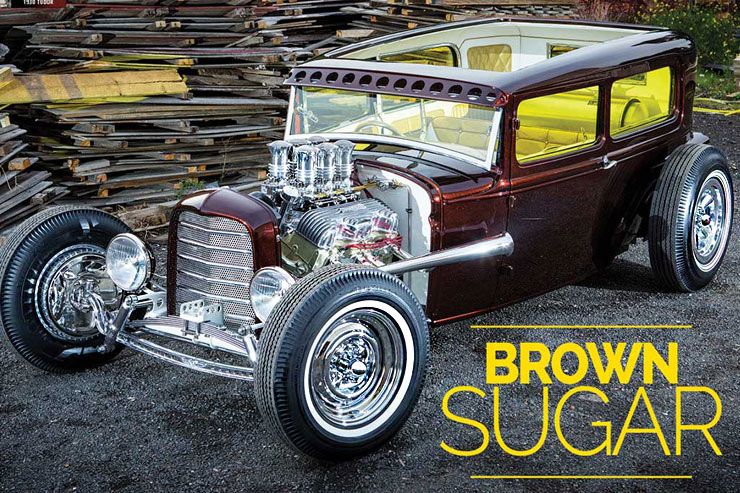
The late 50s and early 60s were hugely prosperous times in the United States. Auto giants Chevrolet, Ford and Chrysler were turning out ever wilder machinery to entice people to buy new cars – which they did in droves. This resulted in huge volumes of old cars being essentially discarded, giving creative hot rodders and customizers vast quantities of natural resources on which to practice and express their creativity. This is why the 60s was such a boon time in the rodding and custom scenes, with many iconic machines built in this era.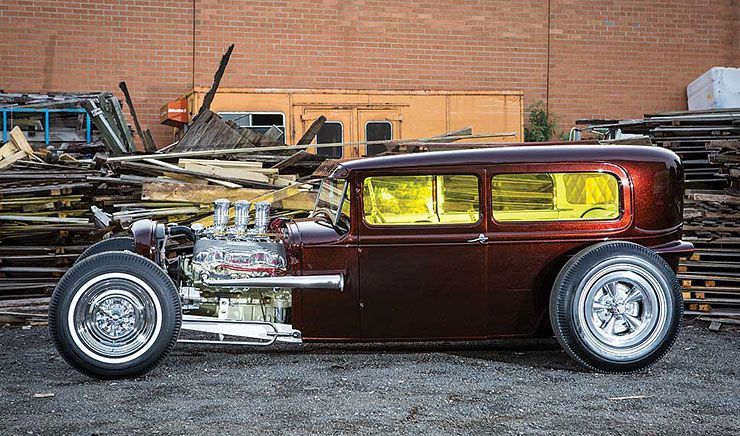
In keeping with its traditional personality, Brown Sugar is all genuine Detroit steel, with all body mods done in steel as well. Those mods include dropping the roof four inches, channelling the body five inches over the Greg Ford-built chassis, adding the drilled external sun visor and grafting in ’49 Ford taillights. Those taillight additions are straight from the customisers’ handbook. Richard fashioned the housings from flat sheet, before blending them onto the Tudor’s rear quarters. “That’s the way rods were heading in the 60s,” says Richard. “The Alexander Brothers, Dean Jefferies and Gene Winfield were all big in the custom scene and a lot of their influence was flowing over into hot rodding.”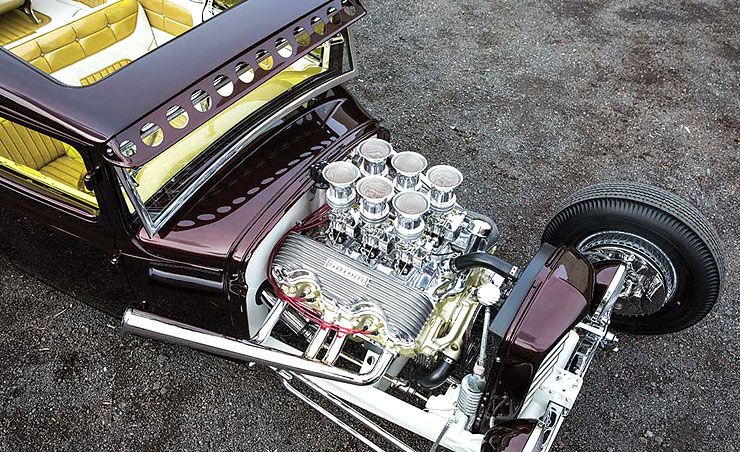
For Richard it was important to get the proportions right so that it didn’t look clumsy. There are very few elements of Brown Sugar that haven’t been carefully thought through. For example, there’s extensive detail throughout, which took considerable hours.
However it’s all been executed in a way that makes it look 60s original rather than smoothed and refined. Heck, even the mismatched wheels are deliberate.
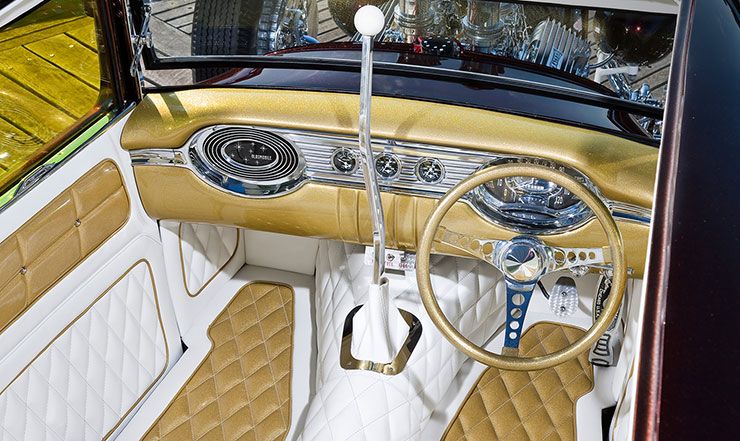
“Guys would have been able to afford one set and not the other,” says Richard. “It’s also a little bit of drag racing influence. Slicks bolted onto the back of street cars to go racing would have been mounted on different wheels.”
Powering Brown Sugar is a 348-cube, Chevy W-series engine – Chevrolet’s first big-block.“ Around this era, rods were built with Olds, Caddy, flathead and lots of other V8s,” says Richard. “I wanted something different. In 1960, the W was only two years old and with its uniquely-scalloped rocker covers it was very cutting edge.” Crowning the W are six perfect-reproduction Stromberg 97s that cost around $600 each! These are bolted atop a genuine (and rare) 1960s Edelbrock manifold.–
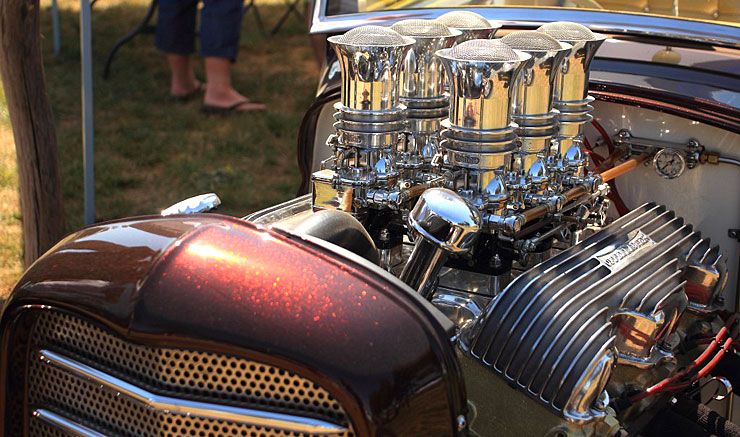
Thanks to the Ronco Vertex magneto and iridescent-red, Moon Eyes plug leads (void of any radio-noise suppression), running any kind of audio system is out of the question. Some rodders go out of their way to give their classic machines modern dynamics. Not so Brown Sugar; with its transverse front spring and dropped Super Bell front axle, it drives like a traditional hot rod.
“I didn’t want to build a Boydster style of rod,” says Richard. “I like them too, but my Tudor wouldn’t have looked right if I sacrificed form over function.”–
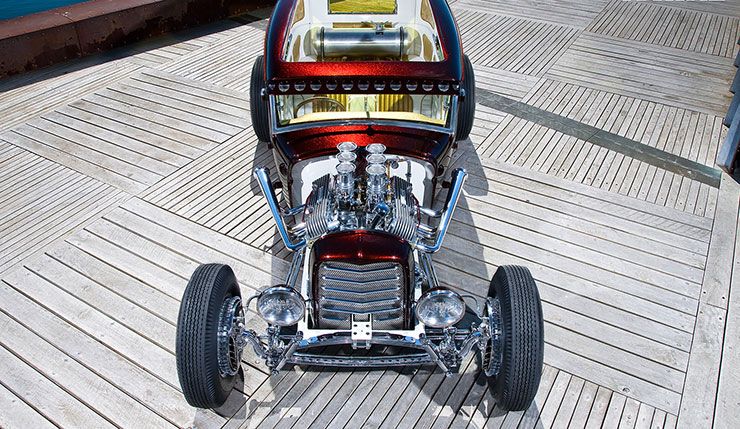
One area where Richard deviated from this theology was in the braking department. Inside what looks like highly-polished front brake drums is a modern disc brake set-up, which combines with a Falcon master cylinder and Mitsubishi L300 pedal box. Speaking of boxes, “I would have liked to have run a manual,” says Richard, “but my feet are so big there was nowhere for the pedals to go.” He compromised with a two-speed Powerglide, which is still period correct, as it’s one of GM’s very early automatic transmissions.
One of the least planned aspects of the build was the interior. While Richard had some rough ideas, he basically told his trimmer, Glenn French, to go nuts. A rough sketch was made and things just kept getting wilder and wilder from there.
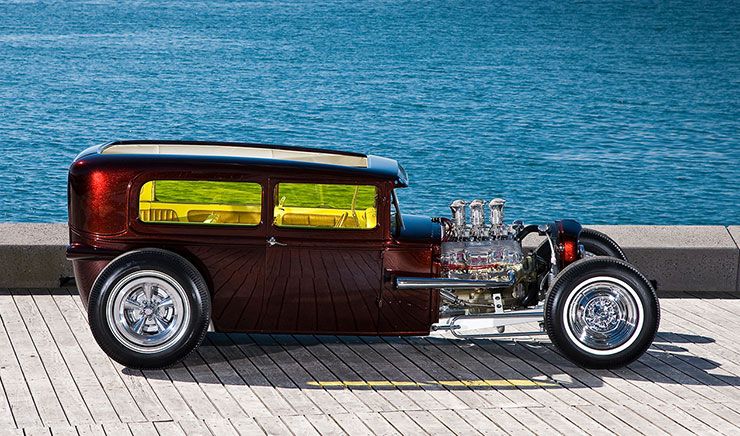
“It’s 60s nutso show car theme in there,” says Richard. “It’s got everything; over-the-top color combination, diamond pleat, tuck ’n’ roll, the whole box ’n’ dice.” To make that gold and white interior pop just that little bit more, the window openings were filled with yellow-tinted Perspex. When it came to deciding on a dash, Richard knew exactly what he wanted. “Oldsmobile have some of the coolest dashes around,” says Richard. “This one is out of a ’56.”
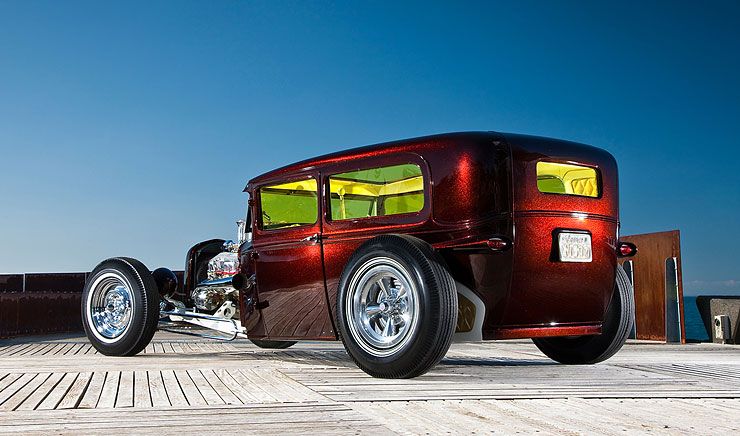
In its raw form, the Olds dash is about 10 inches too wide, so Richard had to cut the ends off as well as ditch the original center section. To re-join the two ends, he had a one-off, finned center panel especially cast, which was then machined to accommodate the three accessory gauges. If you didn’t know better, you’d swear it was factory. To create the phenomenal hue, good mate and House of Kolor brand ambassador Mat Egan first laid on a base of custom-mixed HOK Galaxy Grey and HOK Black. Next up was the Shimrin2 Pale Gold Metajuls (course metal flake), followed by the sumptuous HOK Root Beer Kandy. To make it all shimmer, Carmine De Maria from C.A.D Customs flow-coated the whole lot in HOK USC01 Show Clear.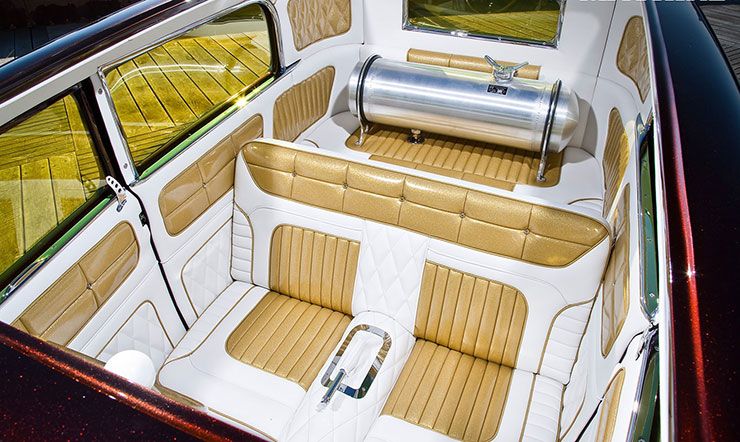
To contrast with this, the chassis, undercarriage and driveline was painted off-white. While on the inside, Mat took some HOK Shimrin2 F16 Light Gold Flake and color-matched it to the vinyl. As a tribute to the glory days of the 60s, Brown Sugar is a stunning success. It’s also a stunning piece of automotive machinery in its own right.
Richard Dabbs certainly nailed with his wild 1930 Tudor, Brown Sugar. No wonder it’s one of the most talked about machines on the motor shows.








